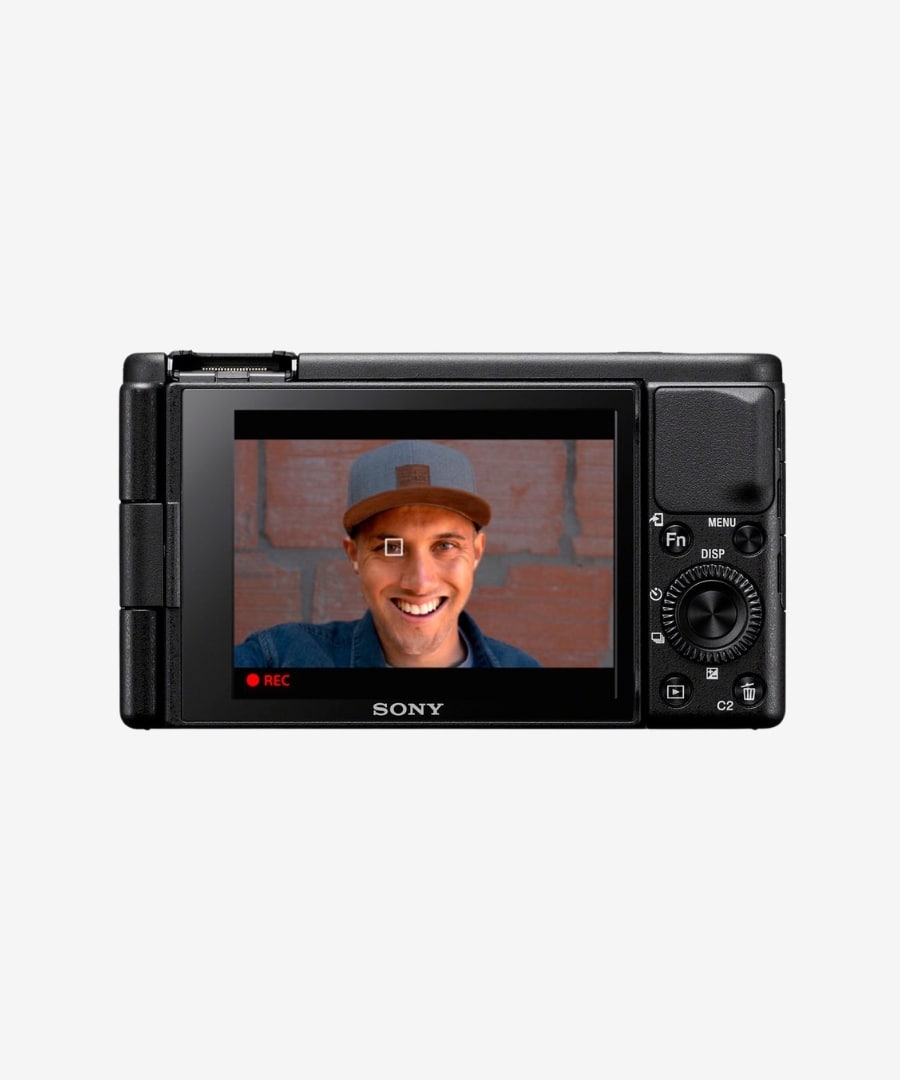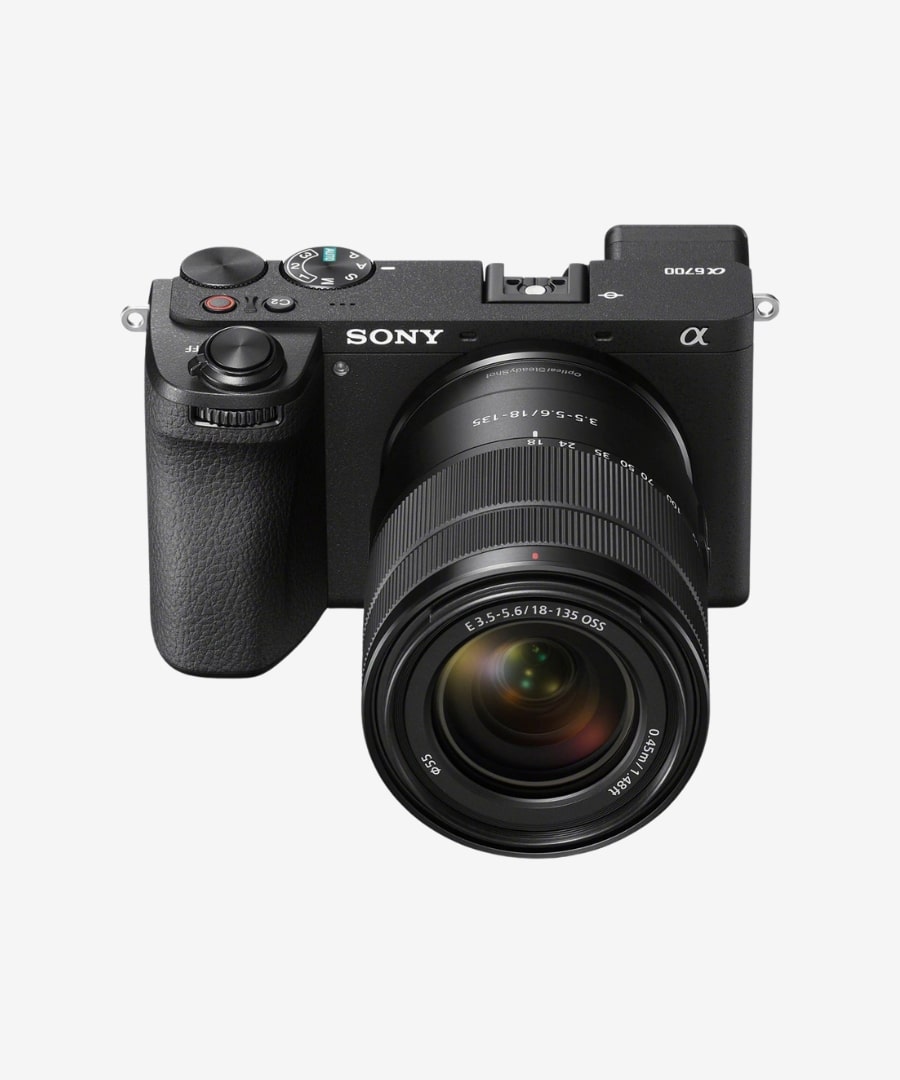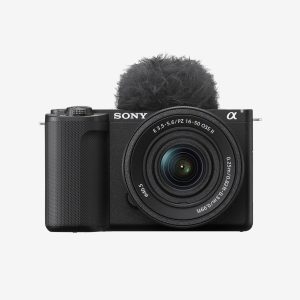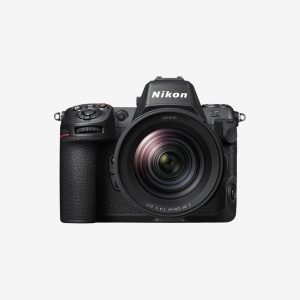Sony a6700 Design and Build Quality
The Sony a6700 has the rangefinder-style positioning of the viewfinder on the left side of the camera. Despite its compact dimensions, Sony has managed to include several design improvements that enhance usability. One of the most useful upgrades is the addition of a front dial, allowing you to control various features with your index finger. This much-needed addition brings the a6700 in line with other cameras in its price range and significantly improves handling.
The button layout has also seen some thoughtful adjustments. The record button has been relocated to the camera’s top that makes it more accessible and ergonomically convenient. You’ll also find a dedicated switch for toggling between photo, movie, and S&Q modes, enhancing your shooting flexibility.
The a6700 features a fully articulating touchscreen, a welcome addition that not only enhances the user interface but also provides quick access to numerous functions. In terms of build quality, the a6700 has a magnesium alloy construction with environmental sealing at all joins. This design choice offers some protection against moisture and dust.
The camera body includes mic and headphone jacks, a micro HDMI socket, and a USB Type-C port. The USB-C port supports both USB power delivery and high-speed data transfer (USB 3.2 Gen 2).

Sony a6700 Handling and Controls
The Sony a6700 brings significant improvements to handling and controls with the enhanced ergonomics and redesigned grip. It’s larger and deeper and gives a more comfortable hold that allows you to carry the camera for extended periods without fatigue. The new dial with the top and rear dials, gives quick access to adjust exposure settings on the go. The placement of these controls feels intuitive, reminiscent of higher-end cameras. The record button now sits on the top of the camera for easier access, and there’s a dedicated switch for toggling between photo, movie, and S&Q modes. These adjustments enhance your shooting flexibility and speed up your workflow.

Display
The Sony a6700 has an impressive display system that includes a high-quality electronic viewfinder (EVF) and a fully articulating touchscreen. The 2.36M dot OLED viewfinder has a resolution of 1024 x 768 pixels and can run at up to 120fps, which ensures smooth motion when tracking fast-moving subjects. The viewfinder optics deliver 1.07x magnification, equivalent to 0.71x in full-frame terms.
The fully articulating 3-inch rear touchscreen has seen an improvement in resolution, now boasting 1.04M dots (720 x 480 pixels). You can use the touchscreen to set the autofocus point or specify a subject to track, enhancing your control over focus. An innovative feature allows you to use the screen as a swipeable touchpad when your eye is at the viewfinder. To prevent accidental focus changes caused by nose contact, you have the option to limit the touchpad to certain regions of the screen. It rotates to give you a clear view of yourself, ensuring you’re always perfectly framed. This feature simplifies the process of recording “talking head” videos or capturing selfies.
The a6700’s display system has the live preview feature to see real-time adjustments as you modify settings like shutter speed or aperture before taking the shot. For those transitioning from DSLRs without live view, this feature can be a revelation, significantly simplifying the process of achieving the perfect exposure and composition.

Sony a6700 Video Quality
The a6700 can capture 4K footage at up to 60 frames per second from the full sensor width. For higher frame rates, shoot 4K at 120p, albeit with a 1.58x crop. The camera supports 10-bit precision and up to 4:2:2 color sampling, ensuring rich, detailed footage.
You have several codec options to choose from:
- XAVC HS (H.265)
- XAVC-I (All-I H.264)
- XAVC-S (Long GOP H.264)
The All-I options can reach bitrates up to 600Mbps, requiring V90-rated SD cards for optimal performance. You can upload and use Look Up Tables (LUTs) and apply these directly to your footage or use them for previewing, with the option to embed them alongside the video file for post-production.
The a6700’s autofocus performance during video capture is exceptional. It offers face and eye detection, subject-specific AF detection and tracking modes. The touch interface lets selecting subjects for tracking or prioritize one subject over another easily. The camera also boasts improved rolling shutter performance, with a readout rate of 15.8ms for full-width 4K footage.
For stability, the a6700 includes an ‘Active’ stabilization mode that combines sensor-shift and digital stabilization. This applies a 1.13x crop but offers more effective correction for dramatic motion. Additionally, the camera saves gyro data into the video file, allowing for powerful digital correction in post-production using Sony’s ‘Catalyst’ software. The camera’s built-in microphone is positioned on the front, which helps in capturing better audio during vlogging or self-recording sessions. The a6700 supports add-on mics
Sony a6700 Image Quality
With the 26MP sensor, there is a slight edge in detail capture compared to its 24MP siblings. In noise performance, the a6700 holds its ground well. At base ISO, noise levels are comparable to its peers. Color reproduction is a strong suit for the a6700. The well-saturated blues, pinks, and purples, which are pleasing to the eye. The bright pink does lean slightly towards magenta compared to its competitors. Reds, greens, and yellows might appear less punchy than some rivals, partly due to the Sony’s slightly darker overall image. JPEG sharpening at base ISO is decent, though it borders on aggressive.
Sony a6700 Autofocus
The Sony a6700’s autofocus system has impressive subject detection and tracking capabilities. You’ll find seven AF area sizes to choose from, ranging from ‘Wide’ to single AF spots. In AF-C mode, you gain access to tracking variants for each area, allowing you to specify how you want to track subjects. The camera’s subject recognition options include Human, Animal/Bird, Animal, Bird, Insect, Car/Train, and Airplane. At 11 fps, it maintains focus on approaching subjects with near-perfect accuracy.
Sony’s face and eye detection remain best-in-class, while the subject-specific detection modes work exceptionally well. Animal detection, in particular, surpasses the competition. Use the customizing button like C2 to quickly cycle through subject options. For optimal performance, disable the Live View setting effect (exposure preview). This slight adjustment can make a significant difference in focusing speed, especially when capturing fast-moving subjects like birds.

Sony a6700 Stabilization
The Sony a6700 comes with a 5-axis in-body image stabilization (IBIS) system. You can slow down your shutter speed to as low as 1/8th of a second and still achieve crisp images, even when shooting handheld.
For videographers, the a6700’s stabilization offers three modes:
- Off: No stabilization applied
- Standard: Basic stabilization for general use
- Active: Enhanced stabilization with a slight crop
The Active mode provides the most stable footage, ideal for walking and talking scenarios or vlogging. While it does apply a 1.13x crop, the resulting stability is often worth the trade-off.
To give you an idea of the stabilization performance:
Off: Noticeable shake, especially while walking
Standard: Improved stability, suitable for most situations
Active: Significantly reduced shake, best for dynamic movement

Sony a6700 Connectivity and Battery Life
A USB-C port that supports USB 3.2 Gen 2 speeds for fast data transfer and tethered shooting. This port also enables USB Power Delivery, so you can charge the camera or power it externally during extended shooting sessions. For video output, the a6700 features a micro HDMI port to connect the camera to external monitors or recorders, giving you more flexibility in your video production setup.
The HDMI output supports clean 4K video, making it ideal for live streaming or recording high-quality footage externally. It’s equipped with both Wi-Fi and Bluetooth for seamless communication with your smartphone or tablet. You can use Sony’s Imaging Edge Mobile app to transfer images, control the camera remotely, or even use your mobile device as a remote viewfinder.
The Sony a6700 comes with the NP-FZ100 battery that can produce between 550 to 570 shots on a single charge, depending on whether you’re using the electronic viewfinder (EVF) or the LCD monitor.











